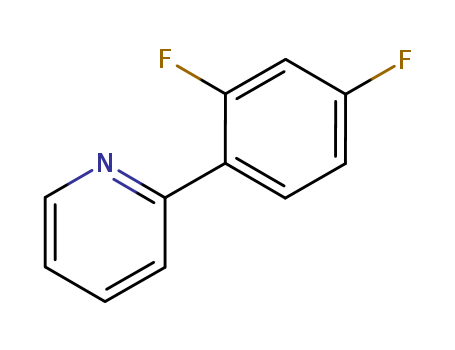- Chemical Name:2-(2,4-Difluorophenyl)pyridine
- CAS No.:391604-55-0
- Molecular Formula:C11H7F2N
- Molecular Weight:191.18
- Hs Code.:29333990
- European Community (EC) Number:846-351-0
- DSSTox Substance ID:DTXSID80460401
- Nikkaji Number:J1.653.373D
- Mol file:391604-55-0.mol
Synonyms:2-(2,4-Difluorophenyl)pyridine;391604-55-0;2-(2,4-difluoro-phenyl)-pyridine;MFCD07787526;Pyridine, 2-(2,4-difluorophenyl)-;4,6-difluorophenylpyridine;SCHEMBL514547;DTXSID80460401;SSABEFIRGJISFH-UHFFFAOYSA-N;BCP12909;AB7023;AKOS015891740;CS-W008107;2-(2,4-Difluorophenyl)pyridine, 97%;AC-25234;DS-14425;SY030216;D3413;FT-0657200;A824431;J-505478





